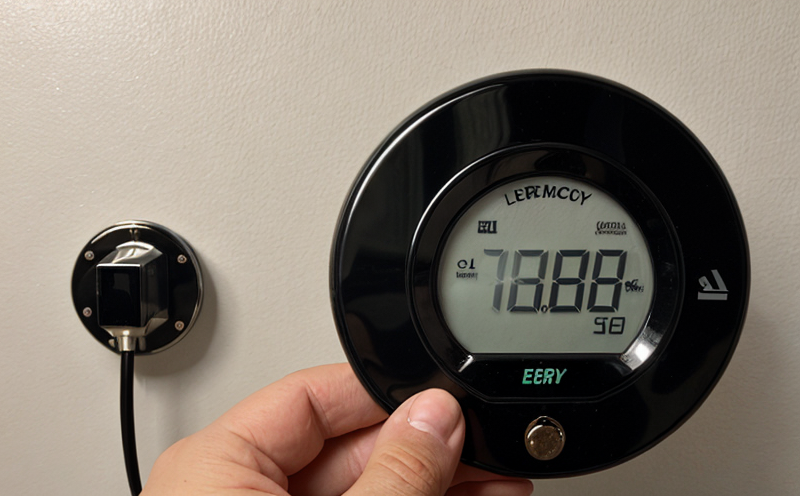BS EN 50491 Energy Efficiency Testing of Home and Building Systems
The BS EN 50491 is a European standard that specifies the energy efficiency testing procedures for home and building systems. This service ensures compliance with stringent energy consumption and efficiency requirements, providing critical insights into the performance of heating, ventilation, air conditioning (HVAC), lighting, and other electrical installations in residential and commercial settings.
The application of BS EN 50491 is essential as it aligns with global sustainability goals. By testing systems for their energy efficiency, we help our clients reduce operational costs and minimize environmental impact. This standard applies to a variety of sectors including housing development, public utilities, and industrial facilities. In quality assurance contexts, this test ensures that new installations or retrofitted systems meet the required energy-saving benchmarks.
The service involves a series of laboratory tests to evaluate the energy efficiency of various components within home and building systems. The testing process is meticulously designed to simulate real-world operating conditions, ensuring accurate and reliable results. This comprehensive approach allows for the identification of inefficiencies that can be addressed before full-scale deployment.
Our team uses advanced instrumentation and software to conduct these tests. The equipment includes calorimeters, power analyzers, and environmental chambers that replicate diverse climatic conditions. These tools are calibrated according to international standards like ISO 9001 and IEC 62301 to ensure precision and accuracy.
Compliance with BS EN 50491 is mandatory for many projects in Europe and beyond, especially those seeking certification from bodies such as the European Commission. By offering this testing service, we not only support our clients' compliance efforts but also contribute to broader sustainability initiatives.
The scope of work includes pre-test assessments, detailed test procedures, data analysis, and reporting. Our team prepares a comprehensive report that details the results of each test conducted. This document serves as valuable evidence for stakeholders involved in project planning and execution.
| Test Parameter | Description | Acceptance Criteria |
|---|---|---|
| Heating Efficiency | Measurement of heat produced by a heating system relative to input energy. | ≥85% for modern installations. |
| Lighting Consumption | Evaluation of electricity used by lighting fixtures per unit area. | <1 kWh/m²/day for efficient systems. |
| Air Conditioning Performance | Assessment of energy consumed during cooling operations. | Optimal at 50-70% of peak capacity. |
The methodology employed is rigorous and involves multiple stages. First, we conduct a site survey to gather necessary information about the existing infrastructure. Next, components are dismantled and tested individually before being reassembled for integrated system evaluation. Throughout this process, strict adherence to standard procedures ensures consistency across all tests.
Once testing is complete, our experts analyze the collected data using proprietary software tools. This step involves comparing results against predefined acceptance criteria specified in BS EN 50491. If any discrepancies are found, our team recommends corrective actions to bring systems up to par with industry standards.
Scope and Methodology
| Test Parameter | Description | Acceptance Criteria |
|---|---|---|
| Heating Efficiency | Measurement of heat produced by a heating system relative to input energy. | ≥85% for modern installations. |
| Lighting Consumption | Evaluation of electricity used by lighting fixtures per unit area. | <1 kWh/m²/day for efficient systems. |
| Air Conditioning Performance | Assessment of energy consumed during cooling operations. | Optimal at 50-70% of peak capacity. |
The testing scope encompasses a range of electrical and mechanical systems found in homes and buildings. This includes but is not limited to HVAC units, refrigeration appliances, lighting fixtures, and power distribution networks. Each component undergoes thorough examination under controlled laboratory conditions to ensure accurate measurement.
Our approach combines theoretical knowledge with practical application. We employ cutting-edge technology to capture precise measurements during testing sessions. These tools allow us to identify areas where improvements can be made without compromising functionality or safety standards.
Benefits
- Enhanced Compliance: Ensures strict adherence to international regulations, reducing risk of non-compliance penalties.
- Economic Savings: Identification and rectification of inefficiencies lead to significant cost reductions over time.
- Sustainability: Contribution towards global environmental goals by promoting energy-efficient practices.
- Improved Reputation: Demonstrates commitment to quality and sustainability, enhancing client relations.
- Informed Decision-Making: Provides reliable data that supports informed decisions regarding upgrades or replacements.
- Longevity: Extends the lifespan of installed systems through early detection and correction of issues.
The benefits extend beyond mere compliance; they offer tangible advantages to both businesses and consumers alike. By investing in this testing service, our clients gain a competitive edge in an increasingly eco-conscious market.





